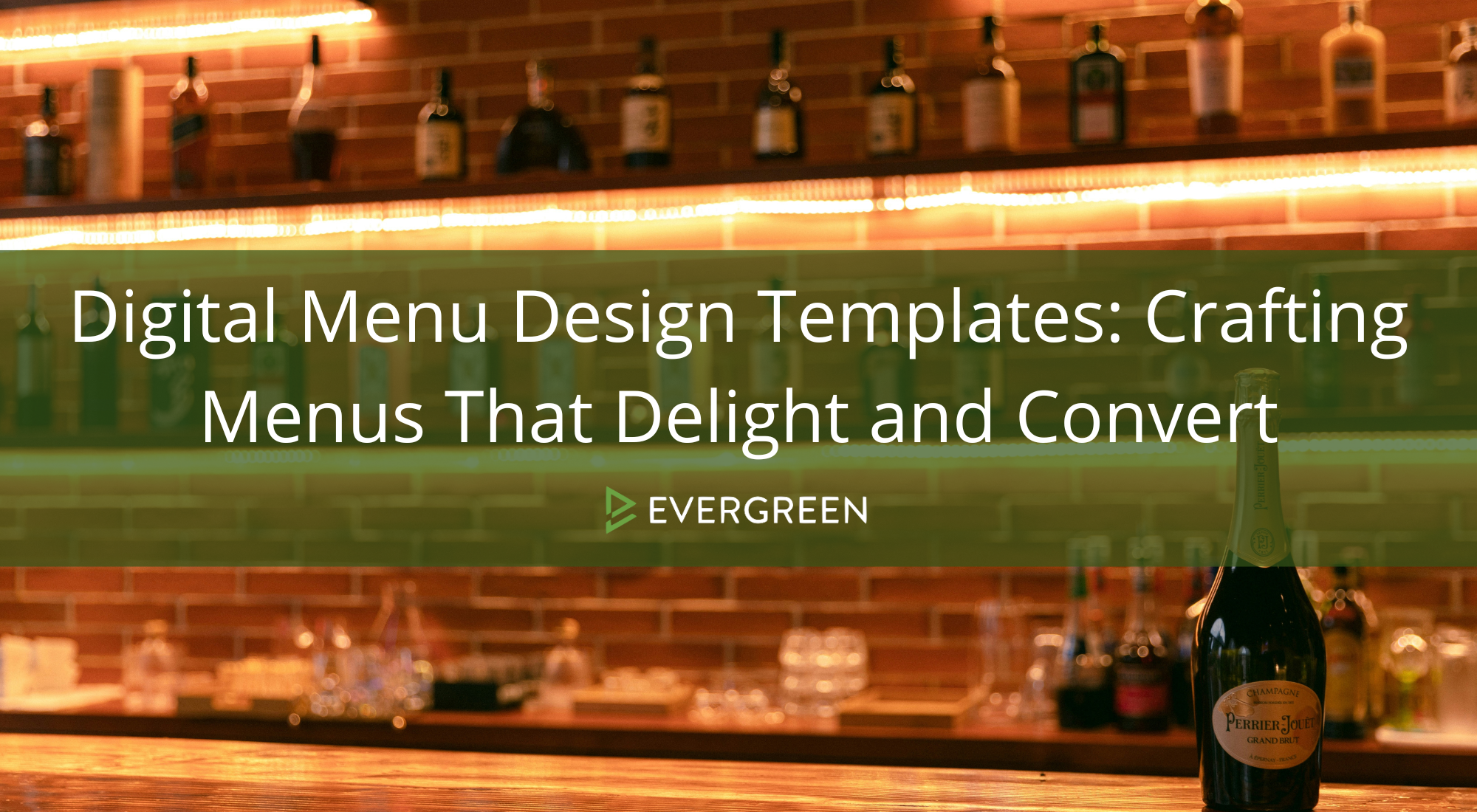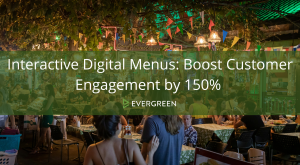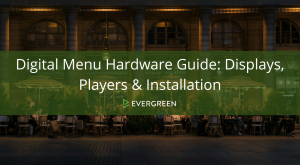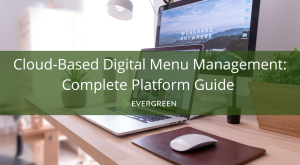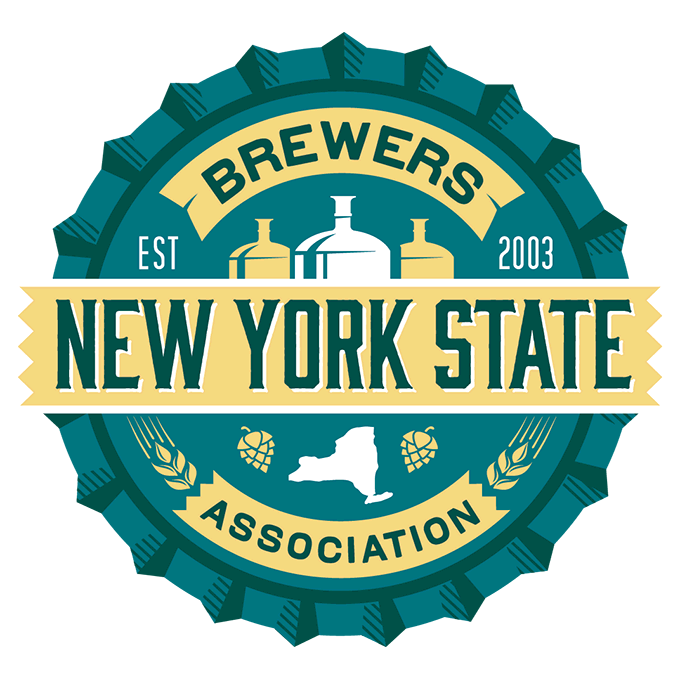Designing a menu isn’t just about listing items — it’s about telling a story, guiding your guests through your offerings, and influencing decisions in subtle ways. Digital menu design templates offer restaurateurs a powerful canvas to showcase their brand and sell more effectively. With screen real estate being your most valuable asset, thoughtful design can keep guests engaged and drive revenue. If you’re looking for the right tool to build professional displays without a designer, explore Evergreen’s digital menu board software.
Why Menu Design Matters
Your menu is more than a list of dishes; it’s the primary marketing tool within your venue. Research from digital signage experts reveals that an easy‑to‑read menu is the top priority for 74% of guests, and about 30% of diners say digital signage leads them to make an unplanned purchase. In other words, clear visuals and legible typography aren’t merely aesthetics — they directly impact sales. For a primer on how loyalty initiatives tie into menu design, check out our restaurant loyalty programs guide.
Viewers spend 30% more time looking at digital signage compared to static signs. That extra attention provides an opportunity to highlight signature items, cross‑sell complementary dishes, and prompt impulse orders. When you use thoughtfully designed templates, every screen becomes a silent salesperson working on your behalf.
Core Principles of Digital Menu Design
Keep It Legible
Legibility is the backbone of any successful menu. Guests make decisions quickly, and if they struggle to read your menu, they’ll disengage. Opt for high‑contrast color combinations (for instance, white text on a dark background) and avoid cluttered layouts. Limit font varieties to two or three, and ensure your font sizes vary to create a clear visual hierarchy: larger fonts for section headings and smaller ones for item descriptions.
Use Visual Hierarchy
Guide guests’ eyes by grouping items logically. Section headings (Appetizers, Mains, Dessert) should stand out so guests instantly know where they are in the menu. Within each section, use bold type or color cues to highlight your best sellers. Strategically place high‑margin items at eye level—studies in menu engineering show that guests spend most of their time looking at the top third of the menu. By positioning profitable dishes in that zone and using icons or subtle backgrounds, you can influence ordering behavior without being pushy.
Embrace White Space
White space (or negative space) refers to the breathing room between design elements. It makes the menu easier to scan and keeps the layout from feeling overwhelming. Don’t cram every dish into a single screen just because you have space. Instead, split categories across multiple slides or create a rotating panel that cycles through items at a comfortable pace. Digital screens give you flexibility; use it to your advantage.
Maintain Brand Consistency
A digital menu board is an extension of your brand. Use consistent color palettes, typography, and graphical elements across all your screens, print materials, and social media. If your brand is playful and casual, choose rounded fonts and vibrant colors. For upscale venues, opt for elegant serifs and a restrained palette. Every design decision should reinforce the personality of your business.
Template vs. Custom Design: Choosing the Right Approach
When creating digital menus, operators often have two options:
Template‑Based Design – Pre‑built layouts provide structure, saving time and ensuring consistent alignment. A templated approach can be ideal if you need to update content frequently or manage multiple locations. According to content experts, templates are efficient for venues that change menus often because they allow quick edits via cloud platforms without requiring a graphic designer.
Free‑Form Custom Design – A free‑form layout allows complete creative freedom. If you have access to a designer or want to craft a unique experience, this option gives you flexibility to break away from rigid grids. Content experts suggest custom design when budgets permit and when you want to stand out with distinctive aesthetics.
Which should you choose? It depends on your resources and how often you update your menu. Fast‑casual restaurants with daily specials might benefit from dynamic templates that adapt quickly, while high‑end restaurants might prefer a bespoke design that matches their elegant ambiance. Whatever you choose, ensure the design remains user‑friendly and consistent with your brand.
Common Mistakes to Avoid
Industry studies suggest that more than 60% of digital menu boards are done wrong. Avoid these pitfalls to make sure your design works for you:
Cluttered layouts: Trying to fit too much information on one screen can confuse guests. Remember, less is more.
Poor legibility: Fancy fonts might look stylish but can be hard to read from a distance. Prioritize clarity over flair.
Static layouts: A menu that never changes becomes invisible. Use subtle animations or rotation to keep content fresh, but avoid over‑animation that distracts from reading.
Ignoring brand consistency: Changing fonts and colors without reason diminishes brand recognition. Establish a style guide and stick to it.
Lack of focus on best sellers: Highlight your high‑margin items; if you don’t promote them, guests may overlook them entirely.
How Evergreen’s Templates Elevate Your Design
Evergreen offers ready‑to‑use digital menu templates that balance beauty with usability. Whether you operate a brewpub, a food truck, or a multi‑unit franchise, Evergreen’s templates can be tailored to your brand. Here’s how our platform helps:
Cloud‑Based Editing
Update your menus from anywhere via Evergreen’s web dashboard. Need to swap out a sold‑out dish? Log in from your phone, edit the item, and watch your display update in seconds. Our cloud architecture means no specialized software or on‑site visits. And because your data lives in the cloud, it’s accessible by authorized staff across all locations.
Custom Branding
Upload your logo, select your brand colors, and choose from various fonts. Evergreen’s template engine ensures that every design stays on brand while allowing you to adjust layouts as needed. You can create different styles for brunch, lunch, or dinner, ensuring each menu has a unique look without sacrificing consistency.
Flexible Layouts
Choose from multi‑column designs, split screens, or full‑width panels to accommodate everything from long tap lists to limited tasting menus. Use image placeholders to showcase mouthwatering photos and rotating panels to highlight seasonal specials or limited‑time offers. Because everything is modular, you can reorder sections or add new categories without breaking the design.
Integration With POS & Inventory
Evergreen syncs with leading POS systems. If an item runs out in your POS, it disappears from your digital menu automatically. Adjust price points, update descriptors, and add new items in one place — no need for double data entry. When paired with inventory systems, your digital board becomes a living document that mirrors real‑time availability.
Remote Access for Multi‑Location Control
Managing multiple restaurants? Evergreen’s centralized platform allows you to push updates to all locations or localize content for each store. Franchisees can enjoy autonomy over local pricing or specials while the corporate team maintains control over brand aesthetics. Everyone stays aligned without sending files back and forth.
Accessibility & Compliance
Accessibility is non‑negotiable in 2025. Evergreen ensures your menu templates meet color contrast and legibility standards, and our software supports screen readers for visually impaired guests. By prioritizing inclusive design, you welcome everyone to enjoy your offerings.
Design Best Practices for Different Restaurant Concepts
Fast‑Casual & QSRs
Quick‑service restaurants often have high customer turnover and a streamlined menu. To keep lines moving:
Group combos and popular items up front to simplify decision‑making.
Use dynamic pricing during rush hours — a concept known as “dayparting” — to promote off‑peak specials.
Highlight high‑margin add‑ons such as drinks or desserts with icons or subtle animations.
Breweries & Bars
For taprooms and breweries, digital menu boards replace chalkboards and printed lists. A well‑designed board can differentiate by:
Displaying style descriptors (IBU, ABV) in a consistent, legible format.
Using color coding for beer styles (e.g., IPAs in amber, lagers in golden hues) while maintaining contrast for readability.
Featuring rotating banners to promote events like trivia nights or new releases.
Fine Dining
Upscale venues benefit from minimalist design:
Simple backgrounds and serif fonts communicate elegance and sophistication.
Large margins and generous line spacing create a luxurious, relaxed feel.
Integrated pairing suggestions (e.g., wine recommendations) can be shown with discrete icons or small footnotes to guide guests toward curated combinations.
Food Trucks & Pop‑Ups
Space is limited, so clarity is key. Consider:
Single‑screen rotating menus that cycle through categories (e.g., tacos, sides, drinks) every few seconds.
QR codes for mobile ordering if lines are long, letting guests view details and place orders on their phones.
Vibrant colors and playful fonts to grab attention from passersby, particularly in busy urban settings.
Menu Engineering: Using Design to Drive Profitability
Menu engineering merges psychology and data analytics to maximize profitability. By studying sales data and understanding decision‑making behaviors, you can position dishes strategically. Here’s how design plays a role:
Eye Movement Patterns – Studies show that guests’ eyes tend to follow a predictable path: starting at the center of the board, moving to the top right, then across and down. Use this knowledge to position high‑margin dishes along that path.
Decoy Pricing – When two items have similar prices, customers often choose the cheaper one. By placing a premium item next to a high‑margin choice, you can make the latter seem like a better deal. Use subtle shading or icons to draw attention without making the menu feel cluttered.
Limited Time Offers (LTOs) – Creating urgency through design (e.g., using a bold color or a “limited edition” badge) encourages impulse purchases. Highlight LTOs in a separate panel so they stand out.
Cost Considerations: Balancing Budget & Impact
Good design doesn’t have to break the bank. Here’s how you can balance cost and quality:
In‑House Tools – Many platforms offer built‑in editors with free templates, allowing your team to make updates without hiring a designer. Evergreen provides intuitive drag‑and‑drop tools, so staff can create beautiful boards even without design training.
Professional Designers – If your brand requires a polished, unique look, investing in professional design pays off. A one‑time fee for custom templates can yield higher perceived value and improved guest experience.
Subscription Services – Some digital signage providers charge monthly fees for template libraries and advanced features. Evaluate whether these costs align with your expected return on investment. Look for platforms that bundle design with scheduling, POS integration, and analytics — like Evergreen — to maximize value.
Emerging Trends in 2025 and Beyond
The future of digital menu design goes beyond static screens. Here are a few trends shaping the industry:
– **AI‑Driven Personalization** – Artificial intelligence can analyze ordering patterns and suggest tailored recommendations. Imagine a digital board that displays dessert specials based on weather, time of day, or customer demographics. Surveys show that **70% of respondents feel known when recommendations reflect their past purchases**, hinting that personalization will become mainstream. For more on the power of personalization, read the research by Bounteous **[here](https://www.bounteous.com/insights/2024/05/07/personalization-revolution-turning-data-delightful-dining-experiences/)**.
Interactive Menus – Touch‑enabled displays let guests scroll through menus, view allergen information, and see high‑resolution photos or videos. Interaction encourages exploration and keeps guests engaged longer.
Augmented Reality (AR) – AR can overlay digital dishes onto the real world, letting guests see how a burger or cocktail looks before ordering. While still emerging, AR can create memorable experiences and set your venue apart.
Sustainability Messaging – As consumers become more environmentally conscious, menus may include icons indicating sustainably sourced ingredients, carbon footprint scores, or farm‑to‑table stories. Presenting this data visually reinforces your commitment to ethical practices and resonates with conscious diners.
Designing Your Menu With Evergreen: A Step‑By‑Step Guide
Ready to bring your menu to life? Follow these steps using Evergreen:
Define Your Goals – Decide what you want to achieve: drive happy hour traffic, upsell desserts, or promote a seasonal menu. This clarity will guide your design decisions.
Choose a Template – Browse Evergreen’s template library, filtering by industry (bar, QSR, fine dining) and layout type. Pick a template that aligns with your brand but allows flexibility for your menu size.
Upload Branding Assets – Add your logo, choose your primary and secondary colors, and select fonts that match your brand personality. These will populate across your template automatically.
Input Your Menu Items – Use our interface to add dish names, descriptions, prices, and optional icons (gluten‑free, vegan, spicy). To streamline future updates, connect your POS system so menu data syncs automatically.
Arrange Sections – Organize items by category and order them in a way that encourages progression through your menu. Use section headers and decorative separators to break up content.
Add Visuals & Highlights – Include high‑quality photos or illustrations for signature dishes. Use icons, banners, or color blocks to call attention to promotions or new items.
Preview & Adjust – Preview your design on various screen sizes (e.g., 55″ display, tablet) to ensure readability. Adjust font sizes or spacing as needed. Don’t forget to test in low‑light conditions.
Schedule Content – Take advantage of Evergreen’s scheduling feature. Set up dayparts (breakfast, lunch, dinner), seasonal menus, or special promotions in advance. The system will handle transitions automatically.
Launch & Analyze – Publish your menu to your screens. Monitor customer feedback and sales data to see which items perform well. Evergreen’s analytics tools help you track dwell time, click‑throughs on interactive menus, and overall sales uplift.
Real‑World Examples
The Brunch Café
A local brunch spot struggled with long wait times and cluttered chalkboard menus. By switching to Evergreen’s clean three‑panel template, they:
Reduced ordering time by 20%, as guests could easily find breakfast bowls, sandwiches, and drinks.
Highlighted high‑profit add‑ons like specialty coffees and pastries using animated banners.
Ran dayparting promotions (e.g., 2‑for‑1 mimosas from 10 a.m. to noon) that increased beverage revenue by 30%.
Brewer’s Guild Taproom
A craft brewery needed to display rotating tap lists and highlight new releases. Their digital menu board now:
Uses color‑coded categories for beer styles, with IBU and ABV displayed clearly.
Features a rotating “Brewer’s Pick” section showing limited releases and pairing recommendations.
Integrates with their POS so that when a keg kicks, it disappears from the board instantly. Guests never order an unavailable beer.
Fine Dining Bistro
An upscale restaurant wanted to reflect its elegant dining experience digitally. Using a custom free‑form design:
They adopted a minimalist black‑and‑white theme with ample negative space.
Each course is displayed on its own slide, with delicate animations between courses to emphasize pacing.
Wine pairings appear as small footnotes beside entrée names, increasing wine sales by 15%.
Measuring Success: Analytics That Matter
A beautifully designed menu is only effective if it drives results. Evergreen’s analytics dashboard provides insights such as:
Item Popularity – Track how frequently each item is ordered before and after design changes. Identify your top sellers and evaluate which promotions are most effective.
Dwell Time – Measure how long guests engage with each screen. Longer dwell times can indicate stronger curiosity or confusion, so use this data to refine layout and pacing.
Sales Uplift – Compare revenue before and after implementing the digital menu. Many restaurants see increases in average check sizes when using dynamic upselling tactics.
Time of Day Performance – Analyze which specials perform best in the morning vs. evening. Schedule relevant promotions accordingly.
Ready to Elevate Your Menu Design?
Effective digital menu design templates blend art and science — balancing creativity with clarity and data‑driven insights. By focusing on legibility, visual hierarchy, brand consistency, and strategic placement of items, you can turn your menu into a high‑performing marketing tool. Add flexible scheduling, real‑time updates, and robust analytics, and your menu becomes a living, responsive part of your business strategy.
Evergreen makes it easy to turn these principles into practice. With customizable templates, POS integration, remote access, and built‑in analytics, you have everything you need to craft menus that not only look beautiful but also boost your bottom line. Try Evergreen free today to see how a well‑designed digital menu can delight guests and drive revenue.
Ready to make your menu shine? Start your free trial or schedule a demo with Evergreen

